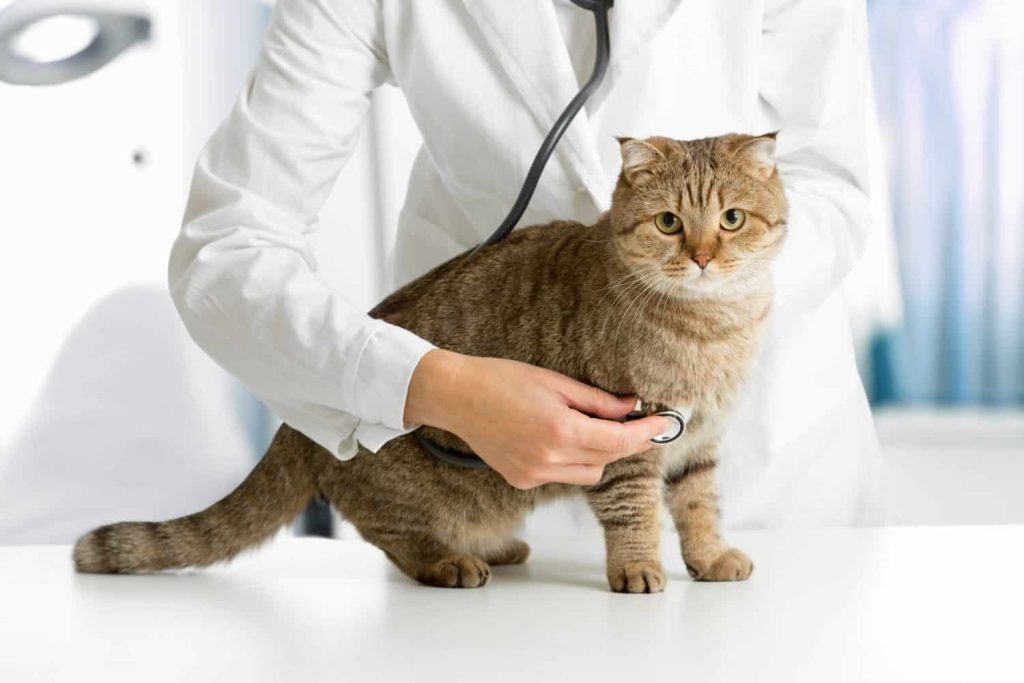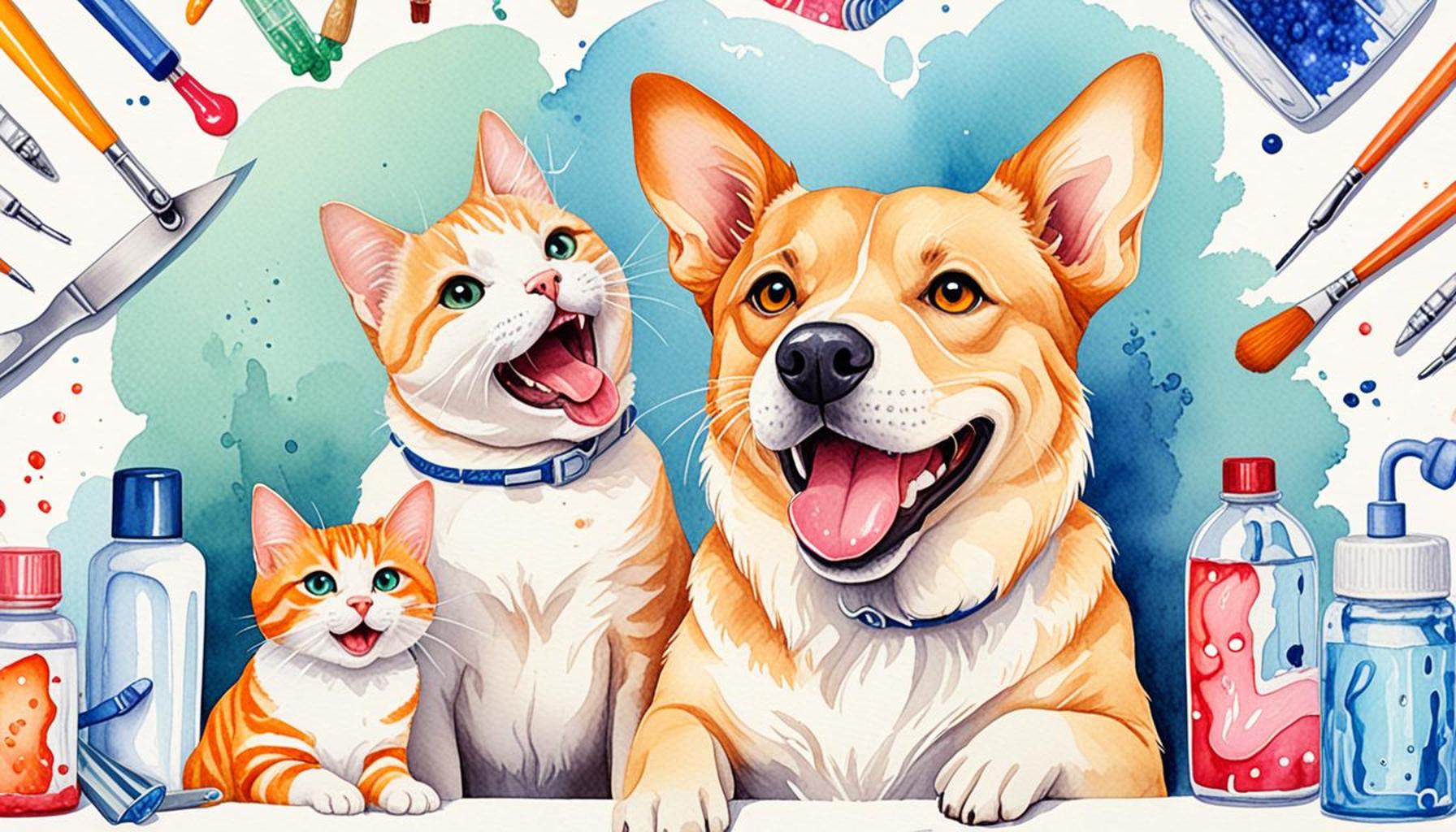How to Reduce Pet Stress During Vet Visits Effectively

Understanding the Challenges of Vet Visits
For pet owners across the United States, the prospect of taking a beloved companion to the veterinarian can often be a source of anxiety. Pets, just like humans, can experience significant stress and anxiety during these visits, which can complicate what should be a routine health check. Recognizing the unique stressors can drastically alter how both pets and owners approach these essential appointments.
Unpacking the Key Stress Factors
Many elements can contribute to a pet’s distress at the vet. One of the most prominent is the unfamiliar environment. The clinic is filled with strange noises—like barking dogs, hissing cats, and the hum of machinery—all of which can be overwhelming for a sensitive animal. Moreover, the distinct scents of cleaning products, other animals, and medical supplies can create an unsettling atmosphere.
Separation anxiety is another common issue, especially for pets that are heavily bonded to their owners. Being in a strange place without familiar faces nearby can trigger fear and uncertainty, leading to behavioral issues such as excessive barking, panting, or even attempts to escape.
Furthermore, prior negative experiences can linger in a pet’s memory. If a dog has experienced discomfort during a previous visit, such as getting a vaccination or undergoing an examination, the association of the clinic with pain can induce fear, leading to a heightened state of anxiety during future visits.

Effective Strategies for a Calmer Vet Visit
Fortunately, there are multiple strategies that pet owners can implement to create a more positive experience for their furry friends. One effective technique is pre-visit familiarization. Introducing your pet to the veterinarian’s office without a medical purpose allows them to explore the environment at their own pace. Consider scheduling a casual visit where your pet can receive a treat and some gentle petting from the staff.
Moreover, bringing along comfort items such as their favorite toy or a familiar blanket can provide significant emotional support during their visit. The presence of familiar scents can help anchor their feelings of safety and comfort amidst the unfamiliar surroundings.
In addition, utilizing positive reinforcement creates a supportive atmosphere. Praise your pet and offer small treats for calm behavior during the visit, reinforcing positive associations with the vet clinic. This could be as simple as offering a treat each time they remain calm when interacting with the vet staff.
By integrating these methods, pet owners not only help their pets manage anxiety but also contribute to an overall positive healthcare experience. Engaging with your veterinarian about tailored strategies for your pet and their unique fears can open up even more opportunities for reducing stress. As you explore solutions for your four-legged family member, you may discover that a little preparation can lead to a significantly less stressful and more enjoyable veterinary visit.
SEE ALSO: Click here to read another article
Creating a Comforting Atmosphere for Your Pet
Understanding and addressing your pet’s anxiety during vet visits can make a considerable difference in their overall experience. As pet owners, we often hold the key to creating a more comfortable and nurturing environment that reduces stress. By establishing a few practical routines, you can help ease your pet’s discomfort and foster a positive relationship with veterinary care.
Preparing Your Pet at Home
Preparation begins long before you arrive at the vet’s office. One of the essential steps in reducing pet stress is to establish a calm pre-visit routine. Here are several strategies to implement at home:
- Desensitization to Transport: For many pets, the car ride to the vet can be a significant source of anxiety. Get your pet accustomed to the car by taking short, positive trips around the neighborhood that conclude with rewarding experiences, such as treats or playtime.
- Practice Handling: Regularly handle your pet at home by gently manipulating their paws, ears, and mouth. This helps them become accustomed to the kinds of examinations they will undergo, making them more relaxed during the vet visit.
- Controlled Breathing: Just as humans practice deep breathing techniques to reduce stress, pets can also benefit from calming exercises. Engage with your pet in quiet, nurturing ways, such as soft petting or massaging, to calm their nervous system.
In addition to those routines, think about implementing a schedule. Pets thrive on predictability, so setting a regular appointment schedule can help them anticipate visits. Discuss with your veterinarian the recommended frequency for check-ups based on your pet’s age and health status, which may provide reassurance for both you and your furry friend.
Utilizing Technology to Ease Anxiety
Technology has also become a valuable ally for anxious pets. Several pet owners have turned to calming apps and gadgets that deliver white noise or soothing music tailored for animals. These tools can significantly minimize the stressors they face, particularly in an unfamiliar veterinary setting. Explore options such as:
- Aromatherapy Diffusers: Some essential oils can help calm pets during travel and in the vet’s office. Lavender and chamomile are popular choices but always consult with your veterinarian before introducing new scents.
- Calming Vests: Compression garments can provide a feeling of security, similar to swaddling a baby. These vests are designed to apply gentle pressure to your pet’s body and have shown to promote a sense of calm.
- Mobile Vet Services: If your pet experiences extreme anxiety, consider seeking services that offer veterinary care at home. This option allows your pet to receive essential care in a familiar and comfortable environment.
Utilizing these strategies can significantly enhance your pet’s experience at the vet. By proactively addressing stress factors and investing time and effort into preparation, pet owners can create a more reassuring environment for their furry companions. Keep in mind that every pet is unique, and tailoring these approaches to your specific situation can lead to the most effective results.
| Techniques | Advantages |
|---|---|
| Gradual Desensitization | Helps pets adapt to the vet environment by gradually exposing them to sights and sounds. |
| Positive Reinforcement | Encourages desirable behavior by rewarding calmness, thereby reducing stress during visits. |
| Familiar Objects | Provides comfort to pets by bringing along their favorite toys or blankets. |
| Calming Products | Reduces anxiety through pheromone sprays and calming treats formulated specifically for stress management. |
Implementing these effective techniques can significantly enhance your pet’s vet experience. As many pet owners know, the clinic can be a daunting place filled with unfamiliar sounds and smells. Utilizing strategies such as gradual desensitization not only acclimates your pet but also fosters a positive association with the vet. When combined with positive reinforcement, you turn visits into opportunities for rewarding interactions. Moreover, introducing familiar objects such as a favorite toy can ease tensions, providing a comforting anchor amidst the chaos of a vet’s office. Lastly, don’t overlook the myriad of calming products available that can effectively alleviate anxiety before and during visits to ensure your pet feels safe and secure.
SEE ALSO: Click here to read another article
Strategies for a Positive Vet Experience
Alongside creating a comforting atmosphere at home, there are crucial in-office strategies that pet owners can employ to enhance their furry friends’ experiences during veterinary visits. The environment of the veterinary clinic itself can often introduce stressors, but understanding how to navigate these situations can lead to a more peaceful outcome.
Choice of Appointment Timing
When scheduling your pet’s visit, consider selecting a time that may result in fewer distractions and reduced stress. Many veterinary clinics have quieter hours, often during weekdays when fewer clients are present. By choosing off-peak times, you can help your pet avoid the overwhelming sounds of barking dogs or the presence of multiple unfamiliar animals in the waiting room. Try to inquire with your veterinary clinic about their slowest hours and aim to book your appointment accordingly.
Incorporating Familiar Items
Bringing along your pet’s favorite items can significantly aid in their comfort during the visit. Familiar items often help provide a sense of security in unfamiliar environments. Here are some impactful options:
- Blankets or Bed: If your pet has a favorite blanket or bed, consider bringing it with you. The familiar scent can be calming and make the exam room feel less intimidating.
- Toys: A beloved toy can provide immediate comfort and can even serve as a distraction during examination processes. Toys with a soothing squeaker or comforting texture can work wonders.
- Portion of Their Regular Food: If your pet is food-driven, consider bringing small pieces of their regular treats or kibble. These can be used as positive reinforcement during the vet visit.
Overall, your pet’s familiarity with these items can create a sense of home and reduce their anxiety during an otherwise stressful experience.
Communication with Veterinary Staff
An integral component of minimizing pet stress at the vet is effective communication with the veterinary staff. Don’t hesitate to express your concerns about your pet’s anxiety or specific behaviors. Providing the veterinary team with insights into your pet’s unique personality can assist in tailoring their approach to your pet’s needs. For instance:
- Discuss Prior Negative Experiences: If your pet has had distressing experiences at the vet in the past, share those details. This information can help the staff to be more mindful and gentle.
- Ask for a Calm Environment: Request that the clinic staff minimize loud noises and rapid movements around your pet during the examination.
- Inquire About Options: Discuss alternative approaches for treatment or assessment, such as allowing you to hold your pet during procedures, which can significantly help in soothing them.
Equipping the veterinary team with knowledge about your pet allows them to provide the necessary care while ensuring a lower-stress environment conducive to your pet’s well-being. Effective communication can transform a challenging experience into a manageable one, paving the way for future visits to be perceived as less alarming by your pet.
With proactive scheduling, the introduction of familiar items, and open communication with veterinary staff, pet owners can significantly decrease stress levels during vet visits. Desensitizing your pet to this environment transforms a potential source of fear into a place of care, setting the stage for a healthier and happier pet.
SEE ALSO: Click here to read another article
Conclusion
Reducing pet stress during veterinary visits is a multifaceted approach that requires the collaboration of both pet owners and veterinary staff. By implementing thoughtful strategies such as scheduling appointments during off-peak times, incorporating familiar items, and maintaining open lines of communication with veterinary professionals, owners can significantly mitigate anxiety for their pets. These proactive measures not only create a more welcoming environment but also foster trust between the pet and the clinic, transforming each visit into a constructive experience.
Moreover, it is essential to recognize that each pet is unique; therefore, what works for one may not suit another. Pet owners must be observant and willing to adapt their strategies to cater to their animal’s individual needs. Research has shown that pets experiencing less stress at the vet are more likely to comply with necessary treatments, leading to better health outcomes and long-term wellness.
As we continue to prioritize the emotional well-being of our pets, a collective effort to advocate for their comfort during vet visits should remain at the forefront of our responsibilities as pet owners. Embracing these strategies not only benefits our furry companions but also enhances the overall experience for both pets and veterinary professionals. For those interested in deepening their understanding of pet behavior and stress reduction techniques, numerous resources, including training programs and community seminars, are available nationwide. By taking these steps, we help pave the way for a harmonious relationship between our pets and the essential care they receive at the vet.



